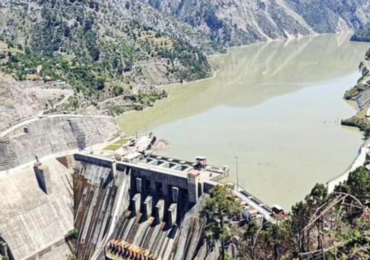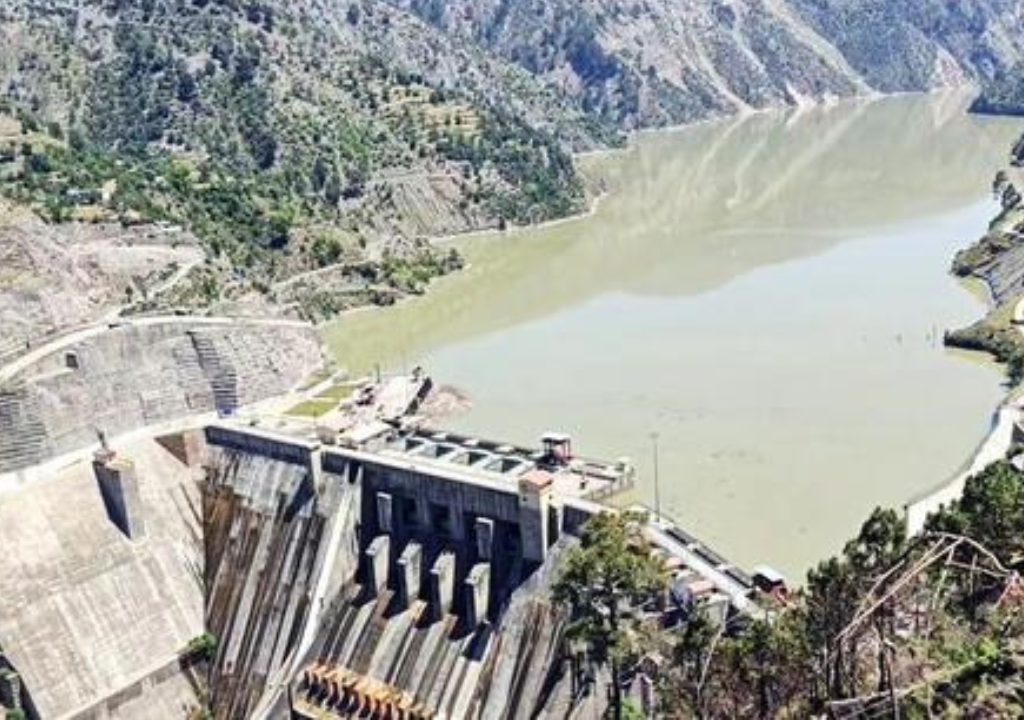In a significant geopolitical development, India cuts off water to Pakistan from the Baglihar Dam on the Chenab River, reducing the downstream discharge by up to 90%. The move follows Pakistan’s surface-to-surface ballistic missile test and intensifies tensions already heightened by the recent Pahalgam terror attack, which killed dozens of Indian tourists. India has also announced plans to curtail flow from the Kishanganga project on the Jhelum River, signaling a firm assertion of its rights over Indus waters.
India’s Strategic Move: What Happened?
According to officials from the National Hydroelectric Power Corporation (NHPC), India began de-silting operations at the Baglihar Dam on Saturday and closed its sluice gates, sharply cutting off water flow downstream to Pakistan. This followed hydrological assessments and internal reviews, and was executed within hours of Pakistan’s missile launch.
Authorities have also initiated planning to limit runoff from the Kishanganga Hydel Power Project, further impacting Pakistan’s share of water from the Indus system.
A senior government source confirmed:
“We have closed the gates of the Baglihar hydel project. De-silting began on Saturday and the reservoir needs to be refilled. This is within our rights.”
Why the Indus Waters Treaty Is on Hold
India has paused the six-decade-old Indus Waters Treaty (IWT)—a pact signed in 1960 that governs the use of the Indus river system between India and Pakistan. This suspension comes in the wake of escalating terror incidents in Jammu & Kashmir, particularly the April 22 Pahalgam attack.
A second official stated:
“Since India has kept the IWT in abeyance, we are exploring all possible ways to utilize our river waters for the benefit of our citizens.”
This includes halting Pakistani-flagged ships from docking at Indian ports and mobilizing nearly 50 engineers in Jammu & Kashmir to supervise dam operations.

India’s Broader Hydropower Push
In parallel with these measures, India has accelerated construction on four key hydropower projects in Jammu & Kashmir:
- Pakal Dul (1,000 MW) – 66% complete
- Kiru (624 MW) – 55% complete
- Kwar (540 MW) – 19% complete
- Ratle (850 MW) – 21% complete
These projects, part of a joint venture between NHPC and Jammu and Kashmir State Power Development Corporation (JKSPDC), are expected to be operational between 2027 and 2028. The Kirthai project (930 MW) is also in the pipeline pending environmental clearances.
The total combined capacity of these projects is 3,014 MW, with a projected output of 10,541 million units (MU) of electricity annually.
Geopolitical Timing and Implications
India’s decision comes amid renewed tensions after:
- Pakistan’s missile test on Saturday, viewed as a provocation.
- The Pahalgam terror attack, which India attributes to Pakistan-based groups.
- Global scrutiny over India’s Russian oil imports, against which India has defended its energy sovereignty.
By halting water flow and pausing the treaty, India is making it clear that cross-border terrorism and regional instability will have strategic consequences.
Kishanganga and Ratle: Points of Contention
Pakistan has long objected to the design of the Kishanganga and Ratle projects, claiming they violate IWT provisions. In June 2024, a Pakistani delegation along with a World Bank-appointed neutral expert visited the Ratle project site in Kishtwar to inspect its compliance.
Despite these visits, India has asserted its right to utilize waters from the Chenab, Jhelum, and Indus within the bounds of the treaty—or outside it, now that it stands suspended.
Water Resource Reallocation Within India
India is not only restricting Pakistan’s access to river flows but also redirecting these waters to benefit its northern states. The Jal Shakti Ministry, in consultation with the Union Home Ministry, is planning:
- Enhanced irrigation networks for Punjab, Haryana, and Rajasthan
- Reservoir augmentation and inter-basin transfer plans
- Boosted storage and hydroelectric capacity in Jammu & Kashmir
These initiatives aim to maximize India’s legal share under the IWT (pre-suspension) and further its energy and agricultural security.
India’s Assertive Water Diplomacy
India’s posture on water sharing has dramatically evolved. Traditionally adhering to IWT even during wars, India now appears willing to link water cooperation with national security. The strategic intent is clear: terrorism and provocation will have tangible costs, including in the form of restricted resource access.
Jaishankar and PM Modi have both signaled a shift toward issue-based retaliation. India’s use of water as a pressure point is aligned with a global trend where hydro-diplomacy and energy security are increasingly viewed as leverage tools.
Conclusion
The cutoff of Chenab waters to Pakistan, the halting of the Indus Waters Treaty, and the acceleration of Indian hydropower projects represent a bold and calculated shift in India’s regional strategy. By asserting its rights over transboundary water resources and signaling firmness against terrorism and provocation, India is reshaping the narrative around the Indus river system.
While the long-term outcomes will depend on global mediation and regional stability, India’s current position is unambiguous: its waters will benefit its people first, and peace will be a prerequisite for any bilateral cooperation.
Acknowledgment
Source: ANI News

